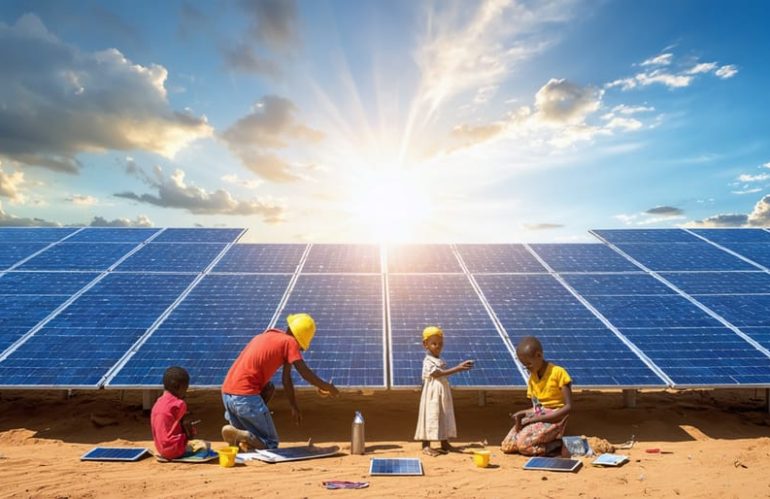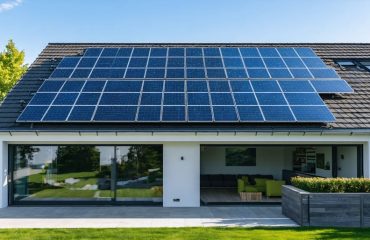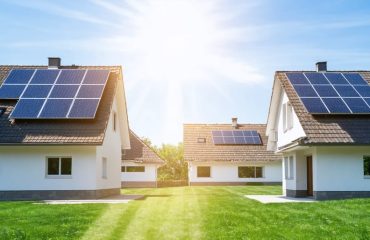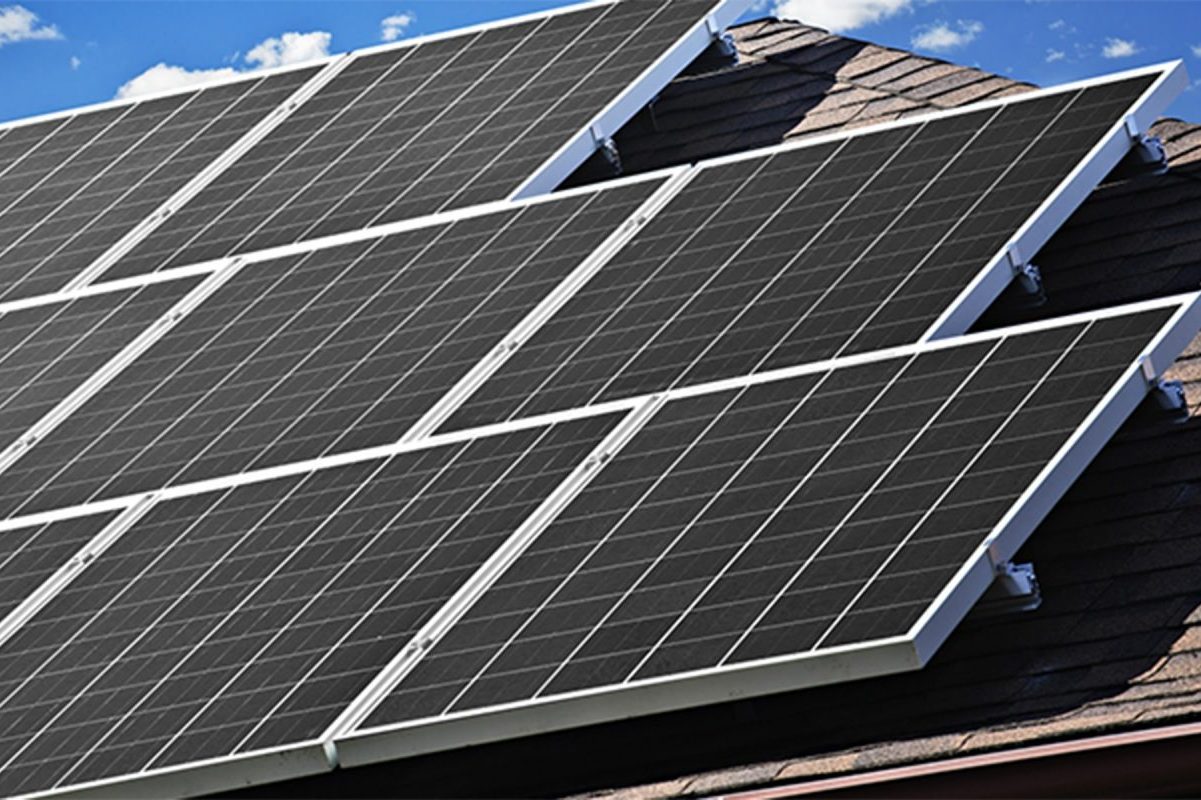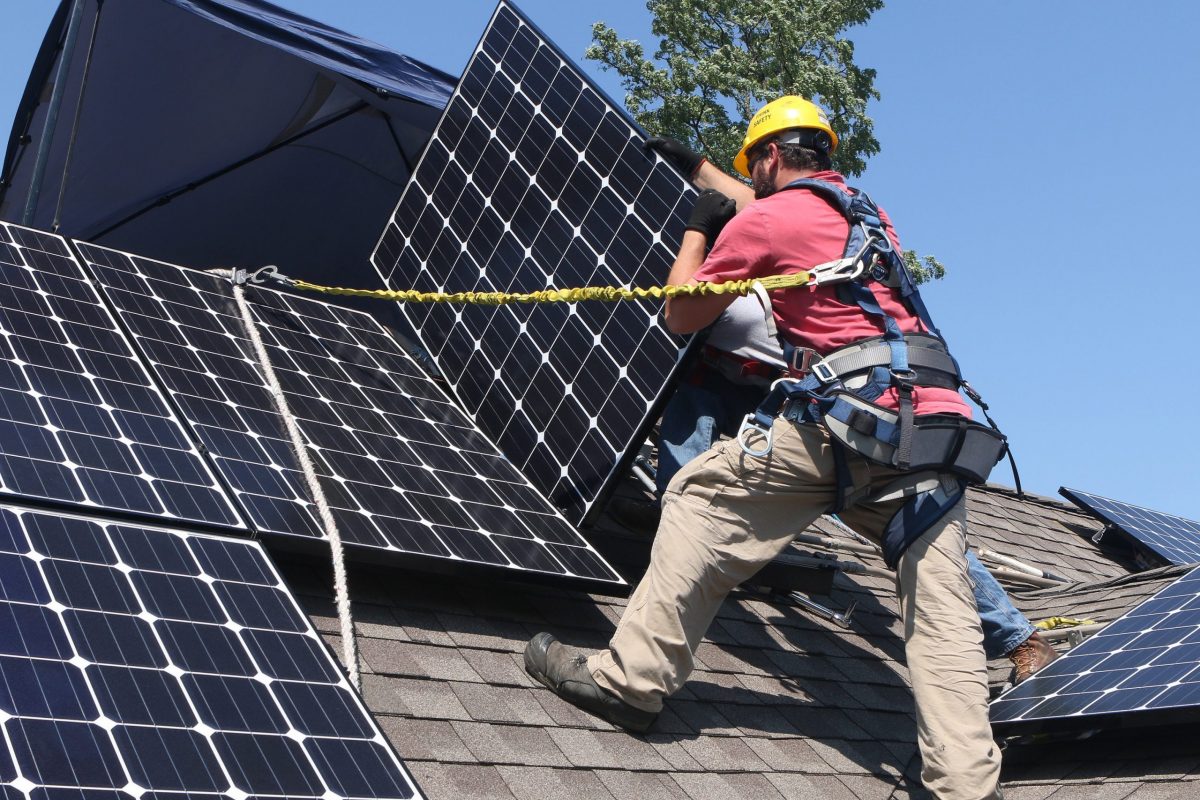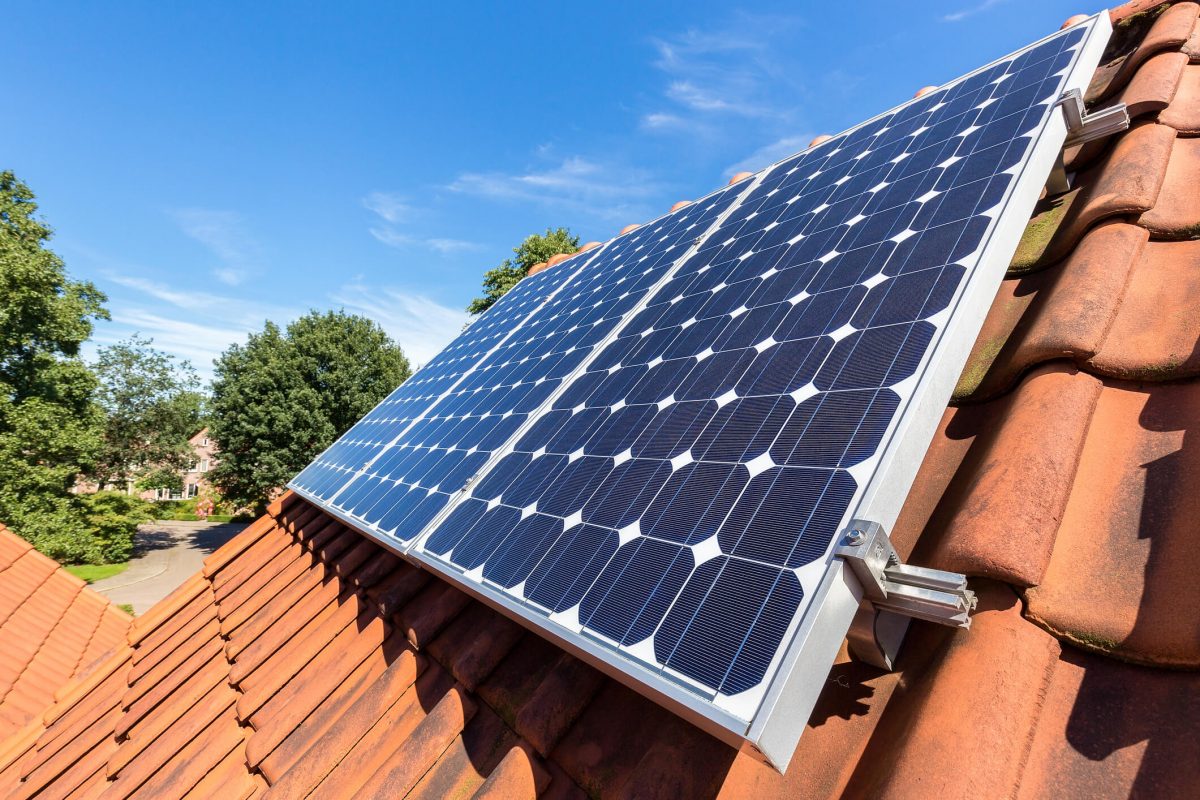Solar power stands at the forefront of our energy revolution, transforming from a niche technology into a mainstream solution that’s reshaping how we power our homes and businesses. Recent breakthroughs in photovoltaic efficiency and plummeting installation costs have accelerated solar energy adoption worldwide, making it increasingly accessible to everyday consumers.
The last decade has witnessed solar panel efficiency jump from 15% to over 23% in commercial products, while costs have dropped by more than 80%. This remarkable progress isn’t just about numbers – it represents real opportunities for homeowners to slash their energy bills while contributing to a cleaner planet. Innovative storage solutions, like advanced battery systems and smart grid integration, are solving the intermittency challenges that once limited solar’s potential.
As we enter 2024, solar energy stands at a crucial turning point. Emerging technologies like perovskite cells and bifacial panels promise to further revolutionize the industry, while simplified installation processes and improved financing options make solar more attainable than ever. For homeowners and businesses alike, the question is no longer whether to invest in solar, but when and how to best implement these evolving technologies.
The Rise of Solar Markets in Developing Nations
Key Growth Regions
Solar energy is experiencing remarkable growth in developing regions, with several key markets emerging as frontrunners in renewable energy adoption. Africa is witnessing unprecedented solar expansion, particularly in countries like Morocco, Kenya, and South Africa, where large-scale solar farms are becoming increasingly common. These nations are leveraging their abundant sunlight to address energy poverty and reduce dependency on fossil fuels.
In Asia, India and China are leading the charge, with both countries significantly expanding their solar capacity. India’s ambitious solar projects in states like Gujarat and Rajasthan are setting new benchmarks for affordable clean energy. Meanwhile, China continues to dominate global solar panel manufacturing while rapidly expanding its domestic solar installations.
Latin America is also embracing solar power, with Brazil and Chile showing impressive growth. Chile’s Atacama Desert hosts some of the world’s most efficient solar installations due to its exceptional solar radiation levels. Brazil’s solar market is growing rapidly, driven by favorable policies and decreasing installation costs.
These regions are particularly attractive for solar development due to their abundant sunshine, growing energy demands, and increasing government support for renewable energy initiatives. The combination of falling technology costs and rising environmental awareness is making solar power an increasingly viable option for these emerging markets.
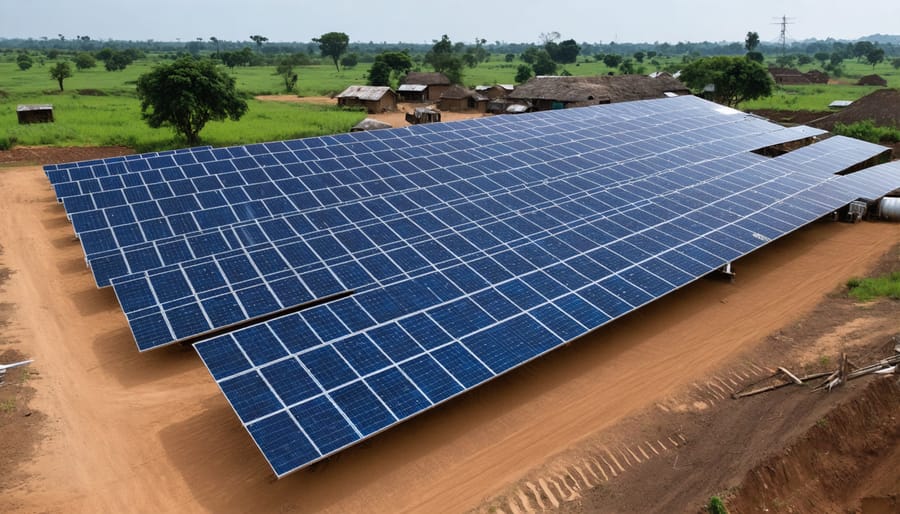
Investment Patterns and Support
The solar energy sector has seen unprecedented growth in investment patterns, with both public and private sectors playing crucial roles. Global investment in solar power reached $308 billion in 2022, marking a significant increase from previous years. Governments worldwide are implementing ambitious support programs, including tax incentives, grants, and feed-in tariffs to encourage solar adoption.
The United States’ Investment Tax Credit (ITC) program offers homeowners up to 30% in tax credits for installing solar systems, while the European Union’s Green Deal has allocated €225 billion specifically for renewable energy initiatives. China continues to lead global investment, committing over $100 billion annually to solar infrastructure development.
Private sector involvement has also intensified, with major corporations increasingly funding solar projects and pledging to achieve 100% renewable energy use. Venture capital firms and traditional banks are offering specialized financing options for both residential and commercial solar installations, making solar more accessible to average homeowners.
International development banks and climate funds are particularly focusing on emerging markets, providing low-interest loans and technical assistance to support solar energy adoption in developing nations.
Innovative Solutions for Unique Challenges
Micro-grid Solutions
Micro-grid solutions are revolutionizing how communities access and manage solar power, particularly in areas where traditional grid connections are impractical or cost-prohibitive. These innovative systems combine solar panels, energy storage, and smart distribution networks to create self-sustaining power ecosystems that serve entire neighborhoods or villages.
Community-based solar projects have shown remarkable success in both developed and developing regions. For example, in rural India, solar micro-grids have brought reliable electricity to villages that previously had no power access, enabling children to study after dark and small businesses to operate electronic equipment. Similar initiatives in remote Australian communities have reduced diesel generator dependence while cutting energy costs by up to 60%.
These localized power systems offer numerous advantages: they’re scalable, require minimal maintenance, and provide energy independence. During natural disasters or grid failures, micro-grid communities can maintain power supply, making them more resilient than traditional grid-dependent areas.
The financial model is equally attractive, with communities often sharing installation costs and benefiting from reduced energy bills. Many projects incorporate pay-as-you-go systems or community ownership models, making clean energy accessible to lower-income households while ensuring project sustainability.
As technology costs continue to decrease and efficiency improves, these community-powered solutions are becoming increasingly viable options for sustainable development and rural electrification worldwide.
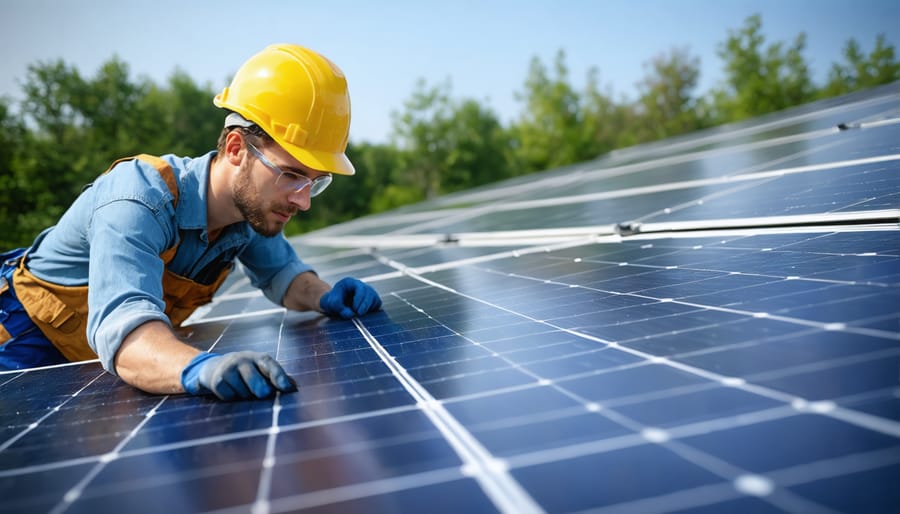
Mobile Payment Integration
Mobile payment technology has revolutionized access to solar energy, particularly in developing regions where traditional electricity infrastructure is limited. Pay-as-you-go (PAYG) solar systems have emerged as a game-changing solution, allowing households to make small, regular payments for their solar energy usage through their mobile phones.
These systems typically include a solar panel, battery storage, and basic appliances like LED lights and phone chargers. Users can make micropayments via mobile money platforms, often starting from as little as $1 per day. Once payment is received, the system automatically activates, providing clean, reliable energy to the household.
The integration of mobile payments has made solar energy more accessible and affordable for millions of people. Instead of requiring large upfront investments, families can pay in small installments that match their income patterns. This flexibility has been particularly beneficial for rural communities and low-income households.
Modern PAYG systems also include smart monitoring features that allow users to track their energy consumption through mobile apps. These apps provide real-time information about system performance, payment history, and energy usage patterns, helping users optimize their consumption and budget effectively.
The success of mobile payment integration in solar energy has attracted significant investment from both technology companies and traditional energy providers, leading to continuous improvements in system reliability and user experience.
Technology Transfer and Local Manufacturing
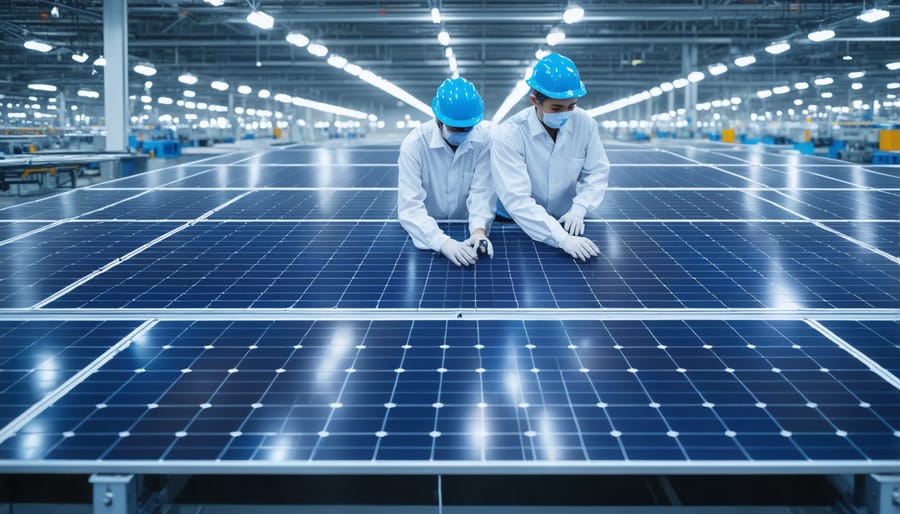
Local Production Benefits
The rise of solar panel manufacturing has become a powerful engine for local economic growth, creating thousands of jobs across various skill levels. From production line workers to engineers and sales professionals, the solar industry offers diverse employment opportunities that strengthen local communities. Recent studies show that solar energy jobs typically pay 10-20% above average wages in manufacturing sectors, providing stable, long-term career paths.
Beyond direct employment, solar manufacturing facilities stimulate regional economic development through supply chain partnerships and increased local spending. Communities hosting solar production plants often see growth in related industries, from raw material suppliers to logistics services. This multiplier effect extends to local businesses, restaurants, and service providers who benefit from increased economic activity.
Additionally, areas with strong solar manufacturing presence often attract complementary green technology businesses, creating sustainable energy hubs that foster innovation and economic resilience. These clusters of renewable energy expertise help communities transition toward cleaner energy while maintaining robust economic growth and providing valuable training opportunities for the local workforce.
Skills Development
The solar energy sector is experiencing rapid growth in training and education opportunities, making it easier than ever for individuals to develop careers in renewable energy. Local community colleges and technical schools are increasingly offering specialized solar installation certification programs, typically completing within 3-6 months. These programs combine classroom learning with hands-on experience, ensuring graduates are job-ready.
Online learning platforms have also emerged as valuable resources, providing flexible training options for those interested in solar technology. Many of these courses focus on practical skills like system design, maintenance, and troubleshooting, while others cover sales and customer service aspects of the solar industry.
Professional organizations are stepping up to offer specialized certifications, with the North American Board of Certified Energy Practitioners (NABCEP) certification becoming the gold standard in the industry. Solar manufacturers are also contributing by providing product-specific training to ensure proper installation and maintenance of their systems.
For homeowners, many solar companies now offer basic maintenance workshops, helping customers understand their systems better and perform simple upkeep tasks, leading to longer system life and better performance.
Environmental and Social Impact
Climate Change Mitigation
Solar energy’s role in carbon emissions reduction has become increasingly significant as the technology advances. Recent studies show that a typical residential solar installation can prevent up to 3-4 metric tons of carbon dioxide emissions annually – equivalent to planting about 100 trees. This impact multiplies considerably when considering the growing adoption of solar technology worldwide.
Beyond reducing greenhouse gas emissions, solar energy helps minimize other environmental impacts associated with traditional power generation. Unlike fossil fuels, solar panels don’t require water for cooling, helping preserve this precious resource. They also produce clean energy without releasing air pollutants or contributing to acid rain, making them a crucial tool in improving air quality and public health.
The environmental benefits extend throughout the entire lifecycle of solar installations. Modern solar panels are increasingly manufactured using sustainable practices, and most components are recyclable at the end of their 25-30 year lifespan. As manufacturing processes become more efficient and recycling programs expand, the environmental footprint of solar technology continues to shrink.
The cumulative effect of widespread solar adoption could be transformative. Industry projections suggest that if current growth trends continue, solar energy could help prevent over 360 million metric tons of carbon dioxide emissions annually by 2030, making it a cornerstone of global climate change mitigation efforts.
Quality of Life Improvements
Solar energy installations are transforming communities by delivering substantial improvements in quality of life. In rural areas, solar-powered facilities have enabled the establishment of modern healthcare centers, providing reliable electricity for medical equipment and refrigeration of vital medicines. This has significantly enhanced access to essential healthcare services, particularly in remote regions.
Education has seen remarkable advancements through solar power. Schools equipped with solar panels can now operate computers, provide evening classes, and ensure proper lighting for studying. This has led to improved academic performance and increased enrollment rates, particularly among girls in developing regions.
The economic impact has been equally impressive. Solar projects create local job opportunities, from installation and maintenance to sales and customer service positions. Many communities have established solar-powered business centers, enabling entrepreneurs to operate small businesses, access the internet, and participate in the digital economy.
Solar-powered water pumping systems have revolutionized agriculture and drinking water access. Farmers can now irrigate their lands more efficiently, leading to increased crop yields and food security. Clean water accessibility has improved community health outcomes and reduced the time spent collecting water, particularly benefiting women and children.
These improvements extend to home life, where solar lighting has replaced dangerous kerosene lamps, improving indoor air quality and reducing fire risks. Families can now enjoy extended productive hours, allowing children to study and adults to engage in income-generating activities after sunset.
The transformative potential of solar energy in developing nations represents a beacon of hope for sustainable development and economic growth. As we’ve explored throughout this article, solar power is proving to be more than just an alternative energy source – it’s becoming a catalyst for social and economic change in communities that have historically struggled with energy access.
The declining costs of solar technology, coupled with innovative financing models and growing government support, are making clean energy increasingly accessible to millions of people. From rural electrification projects in sub-Saharan Africa to large-scale solar farms in India, these initiatives are creating jobs, improving education opportunities, and enhancing healthcare services.
Perhaps most importantly, solar energy is empowering communities to take control of their energy future. Local entrepreneurs are establishing solar businesses, women are becoming clean energy advocates and technicians, and young people are finding new career opportunities in the renewable energy sector.
Looking ahead, the continued expansion of solar energy in developing nations promises to address multiple sustainable development goals simultaneously. It offers solutions to energy poverty while contributing to climate change mitigation and creating economic opportunities. As technology continues to advance and become more affordable, solar energy’s role in transforming developing nations will only grow stronger, paving the way for a more sustainable and equitable future for all.

